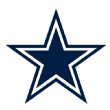The Atlanta Falcons' offense was supposed to be the strength of the team last season, but they scored just 21.2 points per game, which ranked 21st in the NFL. Football Outsiders' DVOA ratings, explained here, ranked the Falcons even lower, at No. 23.
Nobody would have expected the Falcons to lead the NFL in scoring in 2016, but that offense came out massively improved. Matt Ryan had an MVP-level season, and the offense has now powered the Falcons into the NFC Championship Game.
But the Falcons aren't the only team that turned things around this season. Here's a look at the units that improved the most in 2016, how they did it and how likely they are to maintain that improvement in 2017.
OFFENSE

Dallas Cowboys
2015: -15.6% DVOA (31st)
2016: 20.4% DVOA (3rd)

Atlanta Falcons
2015: -7.3% DVOA (23rd)
2016: 25.3% DVOA (1st)
Dallas and Atlanta each rank among the 10 most-improved offenses of the past 25 years, according to Football Outsiders' numbers. But it's Atlanta's improvement this year that truly stands out.
Twelve different teams since 1992 ranked in the top-10 in offensive DVOA after improving by 30 percentage points or more. Every one of those teams had either a new quarterback, a new offensive coordinator, or both -- except for the 2016 Falcons. Atlanta has the same quarterback, No. 1 wide receiver, No. 1 running back and offensive coordinator the team had in 2015, yet they scored 12.6 more points per game and went from 23rd to first in DVOA.
The Falcons did have some important personnel changes, such as the signing of center Alex Mack to stabilize the offensive line, and the addition of wide receivers Mohamed Sanu and Taylor Gabriel. And there certainly is a case to be made that the Falcons needed more than one year to fully adapt to Kyle Shanahan's scheme. But no team has ever improved in the second year of an offensive system the way the Falcons did this season.
The Cowboys, on the other hand, are a more typical example of a team that makes a huge offensive improvement. They had horrible quarterbacking last year, and Dak Prescott has been a massive upgrade under center. They also got Dez Bryant back to full health after he played hurt for most of 2015 (when he was in the lineup at all), and fourth-overall pick Ezekiel Elliott came in and was instantly one of the best running backs in the league.
The good news for both Atlanta and Dallas is that teams with similar offensive improvement tend to carry most of it over into the following year. Six of the 10 previous teams remained among the league's top 10 offenses, and two others ranked No. 11. Only the 2013 Baltimore Ravens regressed to be a below-average offense again the next year, and that was largely because the team was ravaged by injuries.
DEFENSE

New York Giants
2015: +11.3% DVOA (30th)
2016: -16.2% DVOA (2nd)
In terms of rank, the Giants' defense had the best year-to-year improvement in the 27-year history of our advanced stats. It wasn't the biggest improvement in actual rating, but it still ranked among the top 10.
Answering the question of how the Giants improved so much is very easy: General manager Jerry Reese completely rebuilt the unit with free-agent signings. Olivier Vernon had 8.5 sacks and led the NFL in pass pressures by our charting. Janoris Jenkins was one of the top cornerbacks in the league. Damon Harrison stuffed runs up the middle. Add in significant second-year improvement by safety Landon Collins, who was a Defensive Player of the Year candidate, and you get the massive development we saw from the Giants' defense this season.
Defenses tend to be less consistent from year-to-year than offenses. However, as with the most-improved offenses, the most-improved defenses of the past 25 years also tended to keep most of their improvement the following year. That said, defenses fall apart more often than offenses do, and often for inexplicable reasons. The best example is the Denver Broncos five years ago. They went from 31st in defensive DVOA in 2009 to seventh in 2010. Yet in 2011, they regressed back to ranking 30th, despite drafting Von Miller second overall and getting Elvis Dumervil back from a year-long injury.
The most important way for the Giants to prevent a relapse on defense will be to keep their top defensive free agents. Obviously, the most important is pass-rusher Jason Pierre-Paul, who has already stated he's not signing another one-year "make good" contract. Defensive tackle Johnathan Hankins is also an important player to keep, a strong run-stopper who also finished third on the Giants in hurries, behind Olivier Vernon and Pierre-Paul. Other free agents, such as veterans Leon Hall and Kelvin Sheppard, are much easier to replace.
RUN GAME

Washington Redskins
2015: -23.5% DVOA (32nd)
2016: +5.0% DVOA (4th)
Washington's improvement on the ground is a group effort. There was better run-blocking, especially from right guard Brandon Scherff, who took a big leap forward and made his first Pro Bowl this year. The team improved from 21st to sixth in adjusted line yards, our FO metric for separating run-blocking from what running backs do in the open field. But the Redskins also got better performance from their running backs, both last year's starter Matt Jones and undrafted rookie Robert Kelley. Based on charting from our partners at Sports Info Solutions, Washington led the league this year with 149 broken tackles, and most of those came from the running backs: 43 from Kelley, 19 from Jones and 30 from third-down back Chris Thompson.
Washington's improvement in rush offense DVOA was the sixth largest since 1992. The bad news for Washington is that most of the other teams with similar improvement regressed significantly the following year. On the other hand, most of those teams were a lot better than the 2015 Redskins in the year before. It's highly unlikely that Washington will go back to having one of the league's worst running games next season, but it also isn't likely to be as efficient as it was in 2016.
PASS DEFENSE

Tampa Bay Buccaneers
2015: 20.6% DVOA (26th)
2016: -4.0% DVOA (6th)
The Giants improved their entire defense in 2016. And while the Buccaneers improved their pass defense by nearly as much, the run defense actually got worse. In 2015, the Bucs ranked ninth against the run and 26th against the pass. In 2016, those rankings switched, to sixth against the pass but 24th against the run.
There are plenty of reasons behind Tampa Bay's improvement in 2016. A lot of Bucs fans will point to new defensive coordinator Mike Smith replacing Leslie Frazier, and they got worried when it looked like Smith might leave for a head coaching position elsewhere. However, just as important has been a healthy, consistent secondary. In 2015, the Tampa had only one cornerback start over half the team's games, journeyman Sterling Moore, who wasn't even on the team this past season. Instead, rookie Vernon Hargreaves and free-agent pickup Brent Grimes each started all 16 games.
One thing that's clear is that the improvement was about coverage far more than the pass rush. Despite their overall struggle against the pass, the 2015 Bucs ranked fifth in adjusted sack rate. This year, they ranked seventh.
Maintaining this improvement in 2017 will be difficult for the Bucs. They certainly can't count on another year of relatively good health in the secondary. And 27 of the 32 previous teams that improved their pass defense DVOA by 30 percentage points or more had some relapse in pass defense the following season.
